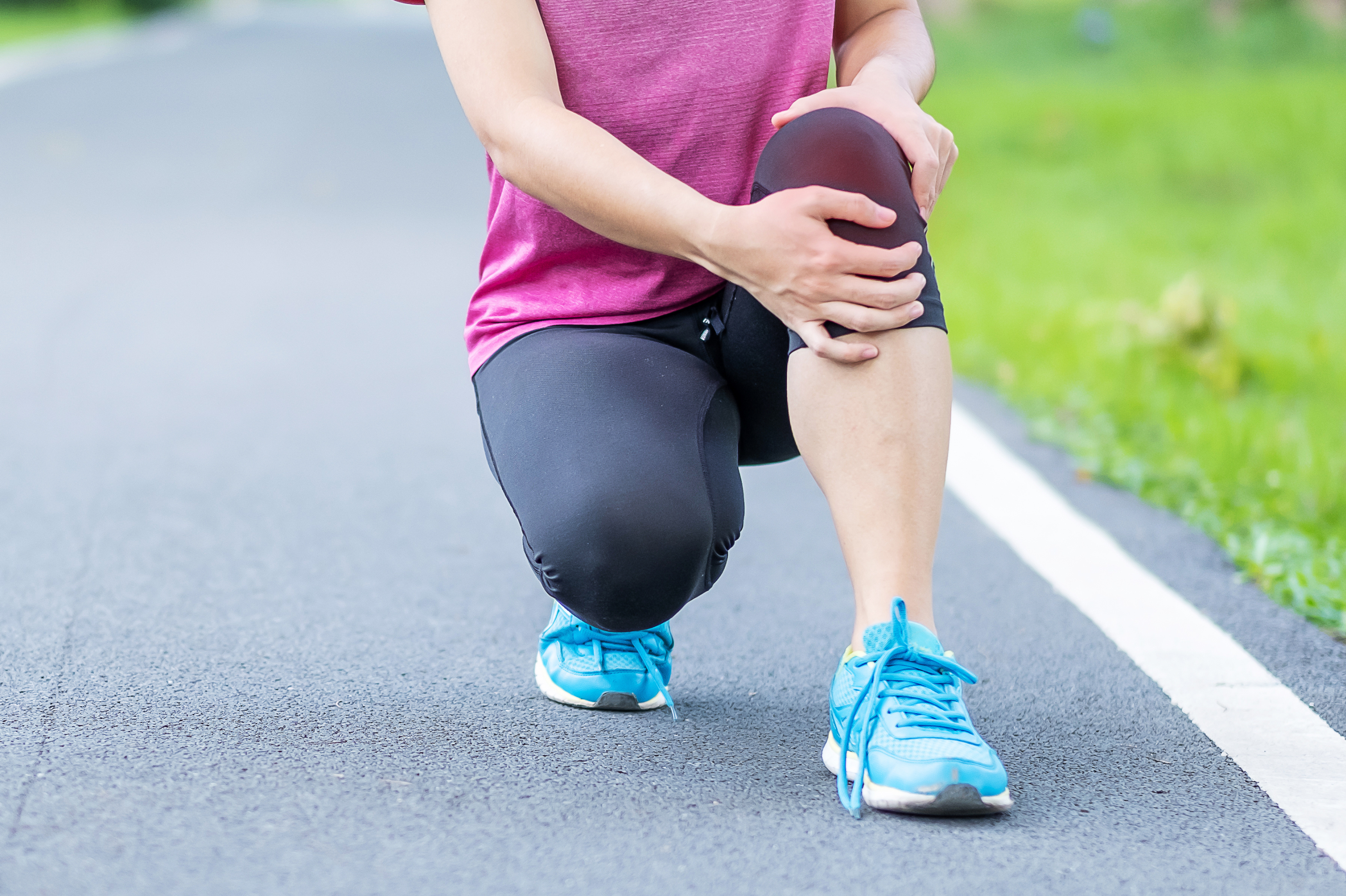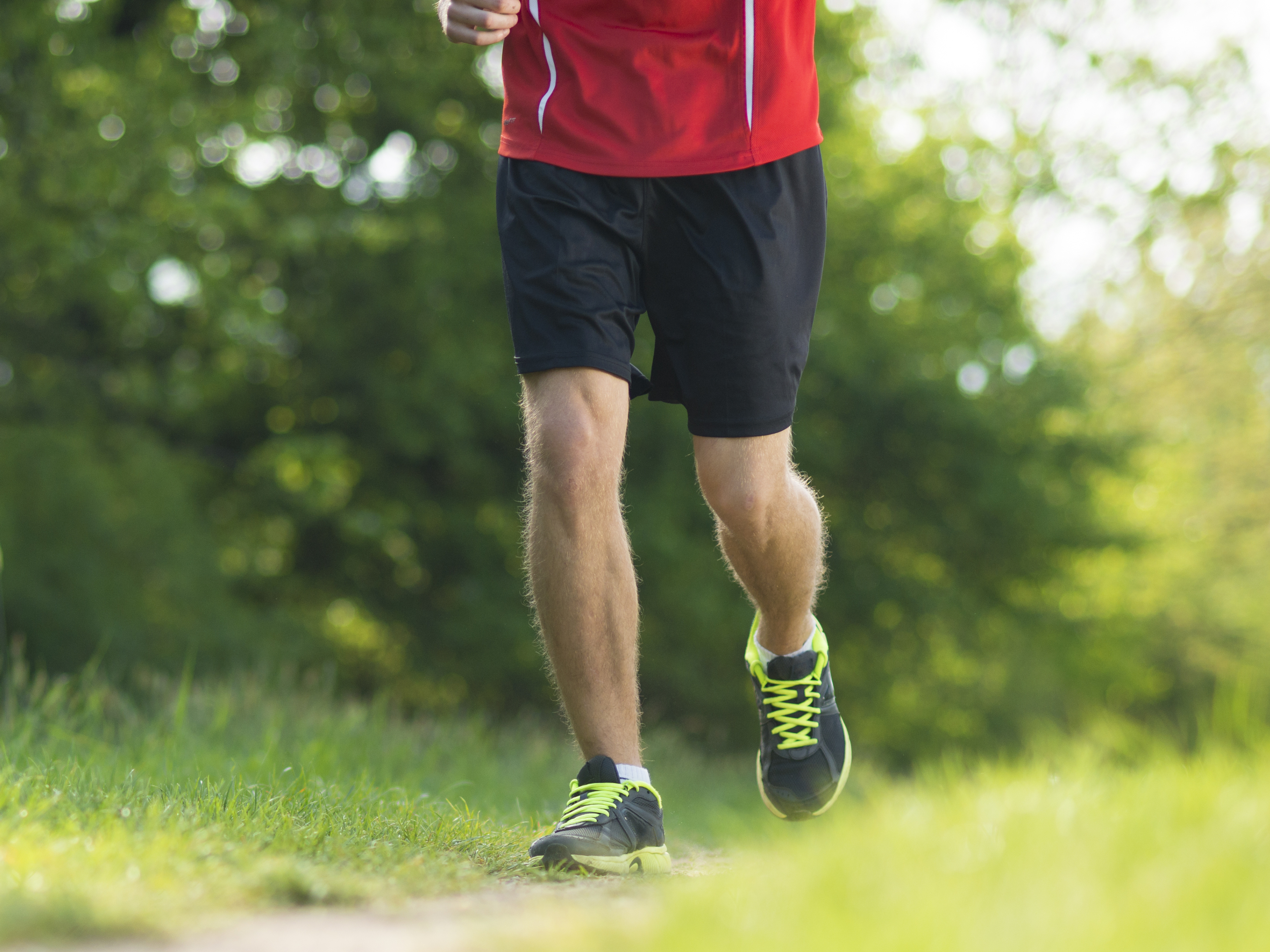Patellar tendonitis: The comprehensive guide all runners need to read
Fixing patellar tendonitis is much easier when you understand how and why it develops. So, let's start by taking a closer look at the condition.
What is patellar tendonitis?
First, let’s clarify the differences between patellar tendonitis, patellar tendinopathy, and patellar tendinosis.
These names all refer to the same condition - an injury to the patellar tendon. So, to keep things simple, we use these names interchangeably in this article.
Now, what is it?
In runners, patellar tendonitis is usually classed as an overuse injury of the patellar tendon.
What is the patellar tendon, and what does it do?
The patellar tendon is a strong band of tissue that connects your kneecap (patella) to your shinbone (tibia).
It works with other structures in the front of your knee to ensure it moves efficiently, helping you extend your leg when you walk, run, jump, and kick.
Anatomy of the front knee structures
These structures form part of your knee's built-in "pulley" and "spring" mechanisms that help straighten (extend) it more efficiently.
The knee's pulley system
When your quad muscles contract, they pull on the quadriceps tendon, which pulls on the kneecap. The kneecap then pulls on the patellar tendon, which pulls on the shinbone and causes your leg to straighten.
We also use this mechanism to control the downward movement in the squat or when we land from a jump (so we don't just collapse to the floor) and when we straighten back up. In a way, the running action resembles hundreds of mini-squats.
Spring mechanism
Like a spring that stores energy when stretched and releases energy when it recoils, your patellar tendon and quadriceps tendons do the same.
They store energy when your knee bends and use it to help power your leg as it straightens to propel you.
This means your patellar tendon works really hard in activities where you require your knee to straighten under high loads, like
- Walking or running downhill
- Doing squat or lunge type exercises
- Running
- Plyometrics, where your muscles rapidly or repeatedly stretch and contract, such as jump squats, box jumps, etc.
How does patellar tendonitis happen?
Patellar tendonitis can develop:
- Quickly in one session (sudden overload) if you work too hard or
- slowly over time (gradual overload) due to a lack of recovery or rest.
To understand how this overload occurs, you must first understand normal loading.
Normal patellar tendon loading and stress
Whever we exercise we load and stress our tissues, causing tiny micro-injuries to develop in the tissues.
Your body carries out breakdown and repair processes in response to these loads. This is necessary for gaining and maintaining healthy, strong muscles, tendons, and bones.
In the case of your patellar tendon, after you exercise, your body automatically begins to repair the tiny micro-injuries that the exercise caused. By removing old, injured tissues and replacing them with new, healthy ones, your tendon becomes stronger and better able to handle more load (stress) in the future.
Patellar tendon overload
Patellar tendon overload happens when:
- you do exercise that is a lot harder than what your tendon is used to or
- when those tiny injuries don't get a chance to heal fully before you load or stress them again.
For example, if you do too many plyometrics in one session or don’t leave enough recovery time between intense running training sessions. This can lead to accumulated microdamage (getting micro-injuries on micro-injuries) in your patellar tendon, which causes it to become sensitive and lose strength.
Over time you’ll notice pain in your patellar tendon with less strenuous activities. This explains why some things that were once pain-free, such as walking up and down stairs, running, or jumping, may become painful.
Other causes of patellar tendon pain
Sometimes, patellar tendon pain can develop in other ways too. In these cases, different treatment and recovery guidelines may apply. This includes:
- A direct hit or injury to your patellar tendon
- Certain medications, such as fluoroquinolone antibiotics
- Inflammatory conditions, such as gout, rheumatoid arthritis, and psoriasis
If any of these apply to your injury, it’s best to follow your doctor's guidance on treating your patellar tendon.
Symptoms of patellar tendonitis
Pain in the front of the knee is the most common symptom of patellar tendonitis.
But front knee pain is associated with many knee conditions (like patellofemoral pain syndrome), so we need to be able to tell the difference between them so we can treat it effectively.
According to research, the two defining symptoms of patellar tendonitis are:
- Localized pain in the patellar tendon
- Pain related to heavy and/or repetitive jumping and landing activities
Localized patellar tendon pain
Unlike runner’s knee (patellofemoral pain syndrome), you’ll most commonly feel patellar tendonitis pain at the lower edge of your kneecap, where the tendon attaches. Less commonly, you’ll feel it along the mid-or lower parts of the tendon where it attaches to the shinbone.
Importantly, your pain will not be "vague" or "spread out" around your knee. You will be able to pinpoint it within your patellar tendon.
Pain from repetitive jumping and landing
Patellar tendonitis is also called “jumper’s knee” because the pain usually develops or worsens with heavy quads (thigh muscle) work or repetitive jumping and landing activities. Essentially, when your knee pulley and spring-loading mechanisms are pushed to the max.
That’s why it's commonly seen in athletes who jump heavily or repetitively in their sports, such as basketball players, volleyball players, and runners.
In runners, the heavy landing when running down hills most often causes patellar tendon pain.
Patellar tendonitis can also be distinguished by a few other characteristics.
Other characteristics of patellar tendonitis
Signs that it might NOT be patellar tendonitis
If you can match these traits to your knee pain, there's a chance you have patellar tendonitis. But, it’s always best to get your diagnosis confirmed by your doctor or physical therapist.
What's the best way to treat patellar tendonitis?
Most often, patellar tendonitis responds very well to conservative treatment. This means you won't need surgery or other invasive treatments to fix it.
Research indicates the most effective treatment for patellar tendonitis is the right combination of:
- Relative rest - Allows your injury to settle, become less irritated, and start healing while maintaining as much fitness as possible
- Exercise - Rehab exercises help restore your tendon's strength and endurance and ensure the rest of your body is strong and mobile, reducing the strain on your patellar tendon
Suppose pain stops you from doing any exercise (including your rehab exercises). In that case, pain relief modalities may help you keep active and correct that balance. We discuss these lower down.
1. Relative rest
Relative rest means temporarily offloading your tendon by decreasing your training loads to pain-free levels and avoiding activities that aggravate your pain.
This does not mean stopping all exercise. It simply means finding activities that help you maintain your strength and fitness without causing pain.
Although rest is crucial for your recovery, too much rest can cause your patellar tendon to lose more strength, which is not what you want. That's why finding a balance between rest and exercise is important.
You can find a detailed discussion of how to use pain to master relative rest here.
Common ways runners keep fit during this phase of rehab include walking and swimming. If kicking hurts your knee, squeezing a float between your knees and swimming using only your arms may help.
2. Rehabilitation exercises
You can usually start rehab exercises even while your tendon is still painful.
It's all about choosing the correct exercises for the stage of healing you're in.
Research shows that the best way to treat patellar tendonitis is with progressive strengthening exercises targeting your patellar tendon and the muscles supporting your knee straightening mechanism (quadriceps muscles).
Squats are one of the most commonly used exercises for strengthening your patellar tendon.
But simply knowing what exercises to do is not enough. You must also know how to start squatting safely, when to progress, and how to adapt them for your unique injury and goals.
Our bodies work like kinetic chains, meaning a weakness or tightness in one area may lead to extra strain on another. So, a well-balanced rehab plan must also include strength and mobility exercises for the other muscles in your legs and core.
To make pitching your exercises at the correct level easier, we've split the patellar tendonitis rehab plan in the Exakt Health app into 7 stages.
The app, designed with expert physical therapists, automatically sets your training intensity to suit your tendon's strength and adjusts your program based on your feedback after every training session.
3. Pain relief treatments
Some treatments can help calm your patellar tendon pain and keep you moving. However, they don't have a direct effect on the healing process.
The aim of using these treatments is simply to reduce your pain to a level that allows you to do your rehab with minimal discomfort.
Some of the most common treatments used for pain relief include:
- Isometric exercises
- Patellar tendon straps
- Icing
- Shockwave therapy
We've previously discussed all the treatments used for patellar tendonitis pain, what works best, how to use them properly, and what to avoid.
4. Invasive treatments for patellar tendonitis
Some cases of patellar tendonitis don’t respond as well as expected to conservative treatment. In these rare cases, you may need to consider more invasive treatments.
Invasive treatments are said to either help relieve pain or promote healing.
- High Volume Guided injections: A high volume of normal saline (sterile water) with a small amount of anesthetic injected into the tendon to reduce pain to help you start rehabilitation
- PRP injections: Your own blood cells are injected into the injured tendon with the aim of speeding up the healing process
- Patellar tendonitis surgery: Surgery removes injured tissues with the aim to provide pain relief
Patellar tendonitis recovery time
Research suggests that it generally takes a minimum of 6 months to fully recover from patellar tendinopathy, but it can take up to 12 months or more.
Recovery time usually differs among people because everyone’s age, injury severity, health condition, exercise goals, and lifestyles are unique.
Final thoughts
Patellar tendonitis is a condition that can be extremely painful and can sideline runners for extended periods. This doesn’t need to happen to you.
The most effective way to treat patellar tendonitis is with a progressive rehab plan that allows your injury to settle (with relative rest), then gradually helps your tendon build strength.
Need more help with your rehab? Download the Exakt Health app for personalized exercise guidance and evidence-based tips for smoothly and effectively managing your recovery.





